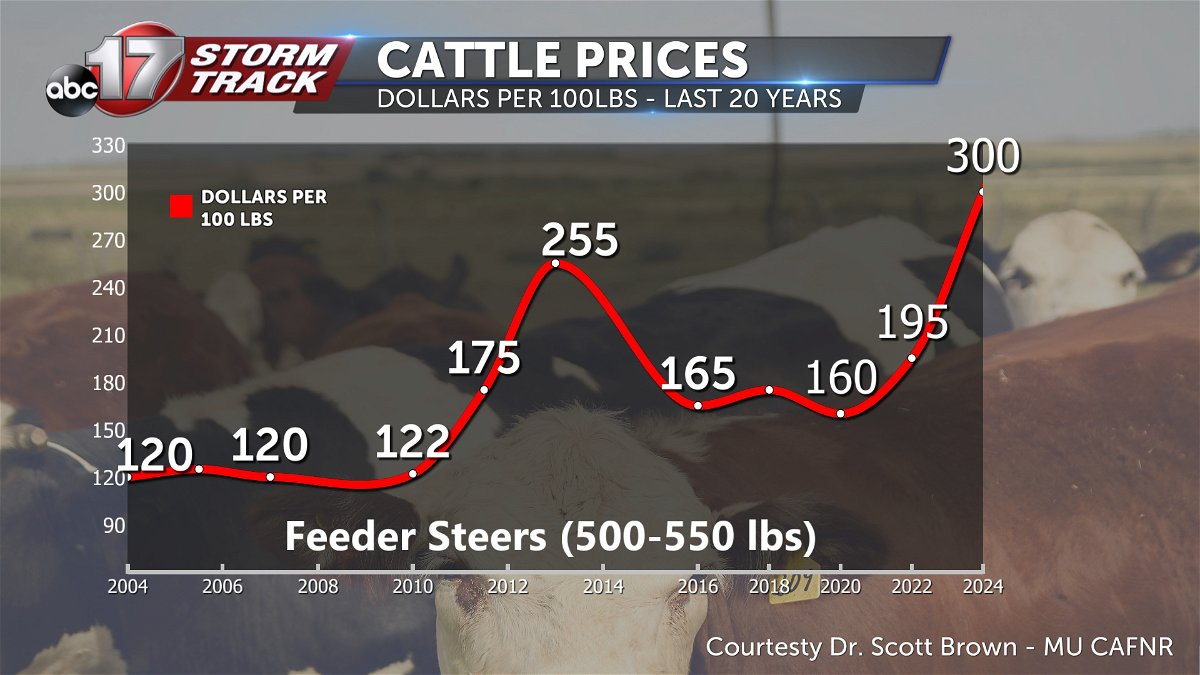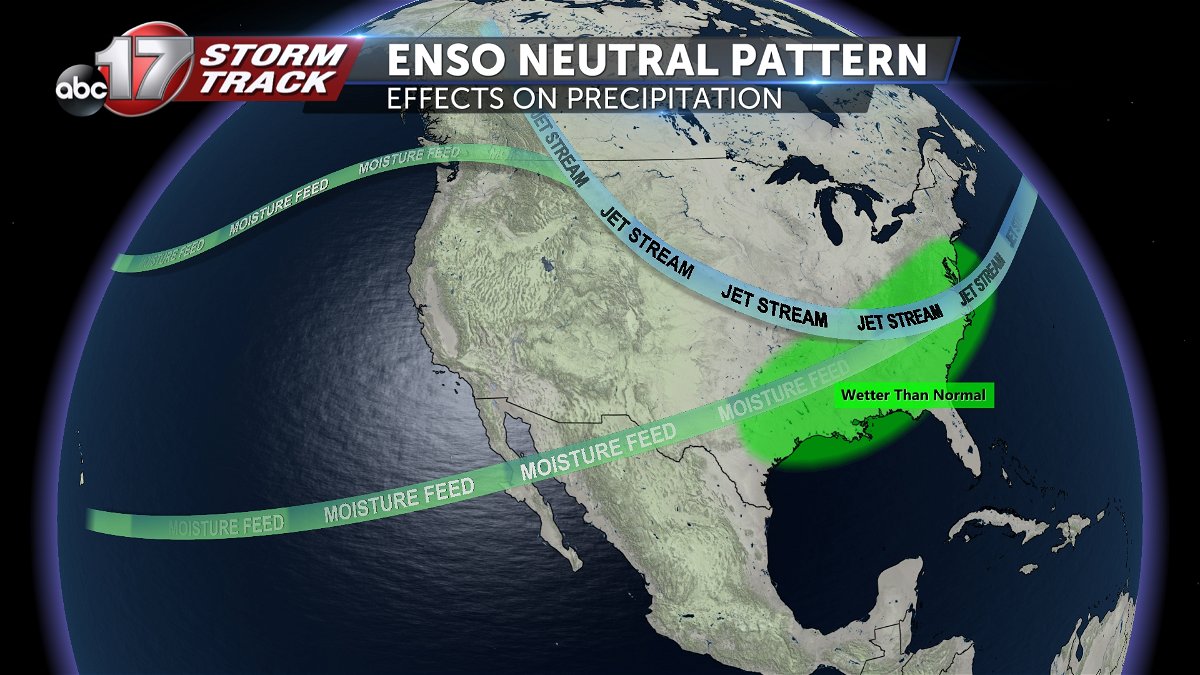Climate Matters: Prolonged drought putting a strain on farmers, consumers
Missouri's drought is the worst in decades. Just ask a farmer.
"In my tenure back here on the farm since the late '90s, I've never experienced this stretch of a drought," said Moniteau County farmer Andy Clay.
As of this week, 99% of Missouri is still experiencing either abnormally dry or moderate drought conditions, and we have not been completely drought-free since June 2022.

The 1-in-20-year drought is hitting farmers hard, with many comparing it to 2012. That year, we had 10 inches less rainfall than normal in Columbia, while 2022 and 2023 had a bit more.
The biggest impact has been to pastures and cattle inventory, as hay feed has dropped dramatically with the dry weather.
Clay's family has been farming row crops and raising livestock in Moniteau County near the Missouri River for 200 years.
"The sale barns have been packed for really the past six months," Clay said. "A lot of our local sale barns have been seeing record numbers for the time of year, and it's exactly what you alluded to, it's because of the drought, people are running out of forage. Buying hay is very expensive, again, supply and demand. So a lot of people are selling their calf crop early or some people are having to disperse some of their cows."
Hay numbers have dropped significantly since 2019, with an almost one-ton per acre drop in five years. That has put a strain on cattle inventory, prices, and beef production. The USDA reports that 2024 has produced the smallest cattle inventory since 1961. The number of beef cows went down 2% since last year, and beef production is down 5% since 2022.

There's a correlation between dry years and cattle prices. Scott Brown, a professor of applied social science at the University of Missouri's College of Agriculture, Food and Natural Resources is forecasting the highest cattle prices in 20 years by the end of this year.
At the start of this year, the MOBUCKS program made $120 million available for small business owners, including farmers. Applications closed within six hours of opening due to overwhelming demand. Missouri farmers received another $200 million through the USDA livestock forage program in 2023.
Gov. Mike Parson said the state is watching to see if drought stretches into the upcoming growing season.
"I don't think there's any question that we're concerned about that," Parson said. "That's why we put the resiliency fund in there, I think it was about $3.5 million we put in there to try to help farmers. And that may just be ways to help with the water situation, whether its reservoirs, whether it's ponds, some way that if we get into that emergency situation that we've got some funds available to help."
Taxpayers often foot the bill for crop losses from drought. Excessive heat and drought are two of the biggest categories of federal crop insurance payouts for the state, according to the University of Missouri Extension.
The payouts reached $225 million in 2021.
Luckily for Clay, despite 2023 being the second-hottest year on record in Columbia, he's been able to find ways to make crops more resilient.
"Soybeans over the years have become earlier and earlier planted because it's proven we're getting a better yield. A soybean is a very tough seed, we've come to find out."
Clay and his crew have been planting cover crops and not tilling acreage to help preserve moisture as much as possible to protect yields.
"We're doing a little bit more of it now with multiple years of drought just to kind of help conserve what moisture we do get," Clay said. "For the most part, a lot of the yields have held on fairly good. Obviously, never where we wanted to be, but this area where we have been hit hard with drought some of the poor quality soils have seen an effect."

In 30 years, it might get harder to produce the same yields. Extreme temperatures during a drought can put even more stress on crops as plants have a higher moisture demand. Hotter days with fewer clouds and less rain could increase the strain on crops by up to 40%.


Climate scientists predict a 7% decline in corn and a 9% decline in soybeans by 2050 if these dry and warm trends continue. Those numbers could be even higher in the Midwest.
"Normally, we're used to droughts in July and August in a season, but we've seen this now two years in a row and if you have three years in a row it really has a huge effect," Parson said. "There are already people who have cut their herds back on the livestock side of it, and we're trying to make sure that on the row crop side of it that people are able to manage."

You can expect the price of meat to go up by the end of the year.
The USDA consumer price index predicts a 4.5% jump in beef prices. Right now, the average cost of a pound of 90% lean ground beef is $5.93, a 20-cent jump since last year. Next year, that same pound could cost you $6.20.

The ABC 17 Stormtrack Weather Team is already looking at temperature and precipitation trends heading into spring and summer.
We'll be heading into a more variable pattern, meaning the jet stream could bring helpful rain along with stretches of dry, hot weather. The snowpack to our north has been the lowest in several years, meaning the flood risk will be low. Drought may ease with spring rain, but summer stretches of heat and high pressure could also settle in by July and August.
“Farmers are tough as nails. We’ve been through this before, it’s never anything we enjoy going through, but we understand and I think for everyday farmers out there, the people who do this for a living, you gotta understand, you gotta be prepared for bad times. It’s not ever going to be green grass every year," said Governor Parson.
